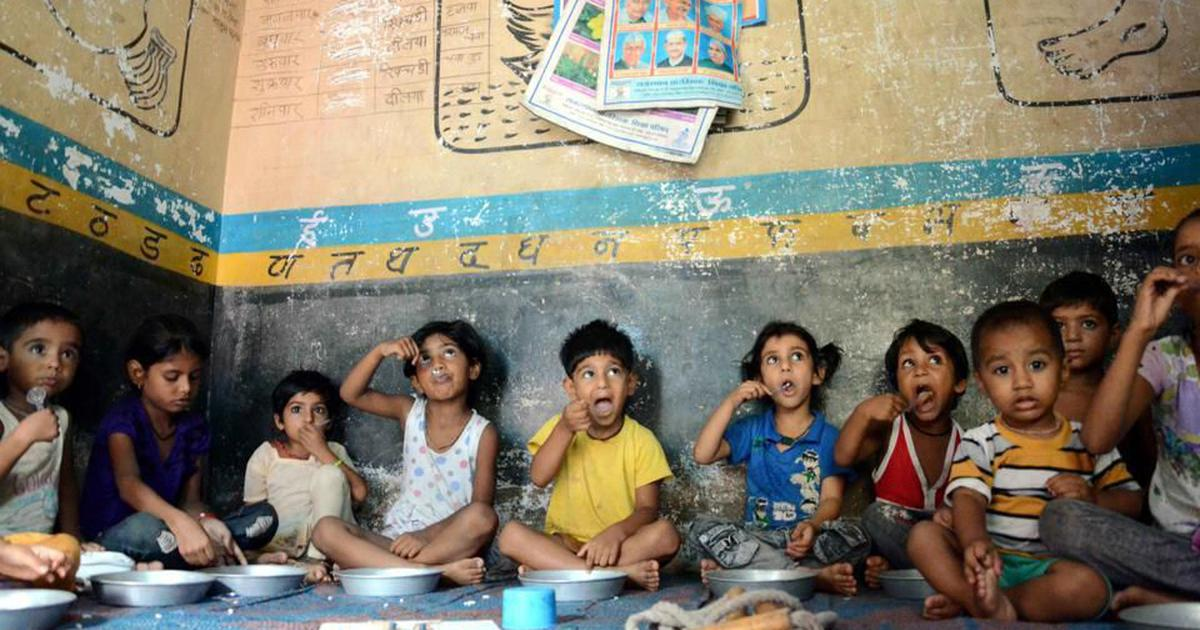Description

Copyright infringement not intended
Picture Courtesy: https://scroll.in/article/955148/kerala-and-tamil-nadu-can-teach-other-indian-states-a-thing-or-two-about-improving-anganwadis
Context: The Union government has launched a new curriculum called Aadharshila (meaning "foundation stone") for children aged 3-6 years in anganwadis (rural childcare centres).
Details
- The Ministry of Women and Child Development (MWCD) has released the National Curriculum for Early Childhood Care and Education (ECCE) 2024 titled 'Aadharshila', marking a significant step towards improving pre-school learning in anganwadis across India.
- This initiative marks a significant step in promoting preschool learning for children aged three to six years, filling a crucial gap in foundational education.

Importance of the Curriculum
- The curriculum is designed to align with the National Education Policy 2020 and the National Curriculum Framework, emphasizing the need for structured learning experiences during the crucial early childhood years.
- Its implementation signifies a concerted effort to provide quality education and developmental support to young children.
Key Components of Aadharshila Curriculum
- Duration and Structure: Aadharshila is structured as a detailed 48-week curriculum, specifically tailored for children in the age group of three to six years. This duration is critical for laying down a strong educational foundation before children transition into formal schooling.
- Curriculum Focus: The curriculum is thoughtfully designed to foster holistic development, including academic, social, and emotional growth. It emphasizes a balance between structured academic activities and unstructured play-based learning.
- Play Calendar: Aadharshila introduces a weekly play calendar spanning 48 weeks, structured into distinct phases:
- Initiation (4 weeks): This phase focuses on introductory academic activities to initiate children into the learning process.
- Exploration (36 weeks): The majority of the curriculum is dedicated to exploring various aspects of learning through activities such as storytelling, rhymes, arts, crafts, and conversation. This phase encourages curiosity, creativity, and social interaction.
- Reinforcement and Observation (8 weeks): The final phase reinforces previous learning and encourages the observation of children's progress and performance.
- Age-Appropriate Activities: Activities and timetables are modified to different age groups within the three to six-year range. The curriculum provides detailed guidelines on the materials required for effective implementation.
- Developmental Objectives: The curriculum is designed to achieve specific developmental milestones, including:
- Developing listening skills
- Building vocabulary
- Boosting imagination and creativity
- Enhancing the ability to follow instructions
- Facilitating social development
- Fostering self-esteem and confidence

Impact and Longitudinal Research
- According to a former NCERT official, longitudinal research on early childhood education highlights its significance. Studies have shown that children who receive quality early childhood education demonstrate better academic performance and psychosocial adaptation in later years.
Implementation and Adaptation
- States have the flexibility to adapt Aadharshila to suit local cultural contexts, ensuring that the curriculum is relevant and effective across diverse communities. This localized approach is crucial for addressing the unique challenges and needs of children in different regions of India.
Conclusion
- The release of Aadharshila represents a critical milestone in early childhood education, emphasizing the importance of structured learning and developmental support during the formative years. By focusing on holistic development and providing a strong foundation for future learning, this curriculum sets a benchmark for nurturing young minds and ensuring a smoother transition into formal education. It highlights the government's commitment to promoting inclusive and quality education from the very beginning of a child's educational journey.
Source:
The Hindu
|
PRACTICE QUESTION
Q. Anganwadi centres play a role in basic healthcare delivery. How can better convergence be achieved between Anganwadi workers and the formal healthcare system to ensure seamless access to essential health services for children and mothers?
|









.jpg)

.png)

